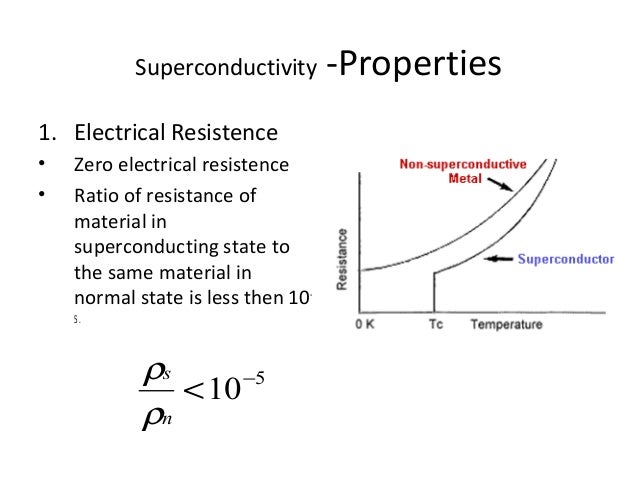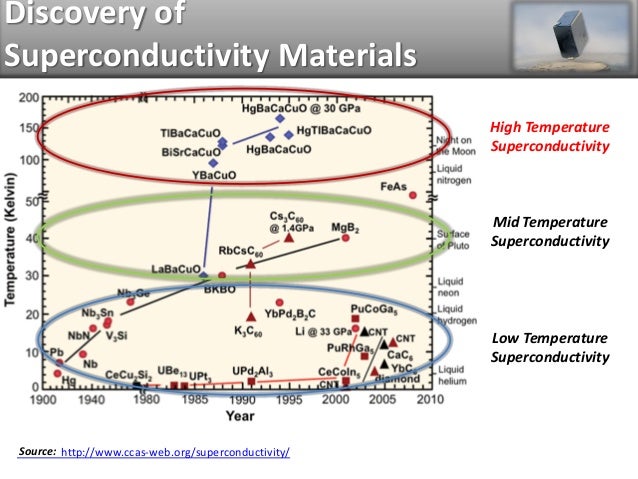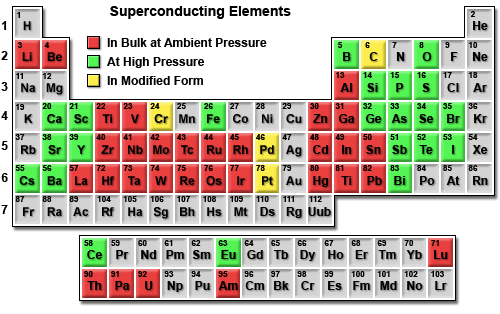High-Temperature Superconductors: The Breakthroughs Driving Energy, Transport, and Quantum Innovation
From lossless power grids to quantum computers, high-temperature superconductors are bringing the future of energy, transport, and technology closer than ever.
Introduction
In 1911, Dutch physicist Heike Kamerlingh Onnes discovered a phenomenon that would transform the landscape of science and technology: superconductivity. This refers to a material’s ability to conduct electricity with zero resistance. Initially, superconductors only functioned near absolute zero, making them impractical for widespread use. These early materials, known as low-temperature superconductors (LTS), were limited by the need for complex and costly cryogenic cooling.
The landscape shifted dramatically in 1986 when scientists found materials capable of superconducting above the boiling point of liquid nitrogen (-196°C or -320.8°F). This breakthrough not only expanded the theoretical understanding of superconductivity but also brought us closer to real-world, energy-efficient technologies. Furhter, this breakthrough opened the floodgates to the possibility of high-temperature superconductivity (HTS), igniting a global race toward a long-elusive dream: room-temperature superconductors.
Today, that ambition is closer than ever, thanks to advances in materials science, quantum theory, and multinational collaboration. In this article, we will delve into the materials and technologies driving high-temperature superconductors, pushing the boundaries of what is possible in the realm of superconductivity. 
The Quest for High-Temperature Superconductors
Conventional superconductors typically require temperatures close to absolute zero (-273.15°C or -459.67°F) to exhibit their remarkable properties. This limitation hindered their widespread use in practical applications. The discovery of high-temperature superconductors in the late 1980s, which can operate at significantly higher temperatures, marked a turning point in the field.
Superconductors are extraordinary materials that exhibit a range of unique and highly valuable properties. They offer zero electrical resistance to direct current, allowing for lossless energy transmission. Additionally, they can carry extremely high current densities, making them ideal for power-intensive applications.
At high frequencies, superconductors maintain exceptionally low resistance, minimizing energy dissipation in signal transmission. Their very low signal dispersion ensures that information travels with minimal distortion, which is crucial for high-speed communications. Superconductors also display high sensitivity to magnetic fields and are capable of expelling externally applied magnetic fields—a phenomenon known as the Meissner effect.
Furthermore, they enable rapid single flux quantum (SFQ) transfer, which supports ultra-fast switching in superconducting digital circuits. Lastly, signals in superconducting systems can propagate at speeds approaching that of light, unlocking possibilities for real-time data processing in advanced technologies.
Technologies Powered by HTS
The transformative potential of HTS spans numerous sectors From levitating trains to quantum computers.
1. Energy Grids of the Future
Superconducting power lines have the potential to transmit electricity with virtually no loss, which could save up to 200 million megawatt hours (MWh) of energy annually, reducing costs and environmental impact. Superconducting cables, such as those using rare-earth barium copper oxide (REBCO) tapes, are revolutionizing energy transmission. Trials in cities like Seoul and Essen, Germany, demonstrate cables capable of powering thousands of homes with near-zero energy loss. Meanwhile, HTS magnets are integral to next-generation fusion reactors like ITER and SPARC, where they confine plasma at temperatures exceeding 100 million°C—a critical step toward sustainable, clean energy.
2. Transportation Revolution
Magnetic levitation (maglev) trains, such as China’s 600 km/h CRRC model, rely on HTS coils to levitate and propel carriages without friction. These systems promise faster, quieter, and more energy-efficient transit. Beyond trains, companies like Airbus and NASA are exploring HTS motors for electric aircraft, which could reduce weight and energy consumption compared to conventional engines.
3. Quantum Leap in Computing
High-temperature superconductors are pivotal to quantum computing. Transmon qubits, used by IBM and Google, leverage superconducting circuits to maintain quantum coherence. Additionally, superconducting quantum interference devices (SQUIDs) enable ultrasensitive magnetic field detection, advancing medical imaging and materials science.
4. Medical Imaging:
Superconducting magnets are crucial for high-resolution medical imaging techniques like MRI, making diagnoses more accurate and comfortable for patients. High-temperature superconducting magnets are already being used in advanced medical imaging techniques like magnetic resonance imaging (MRI), offering higher resolution and shorter scan times.
5. Space and Defense
China’s proposed Earth-Moon “information superhighway”—a network of 30 satellites and lunar ground stations—could use HTS for real-time data transmission in extreme environments. In defense, compact HTS magnets are enabling portable directed-energy weapons, offering high-power laser systems for military and aerospace applications.
The Mechanism Behind HTS
The quest to unravel the mechanics of high-temperature superconductivity (HTS) remains one of the most tantalizing puzzles in condensed matter physics. Conventional superconductors, explained by the Bardeen-Cooper-Schrieffer (BCS) theory, rely on electron-phonon interactions: electrons pair up by exchanging vibrations in the crystal lattice, gliding through materials without resistance. However, this elegant framework falls short for HTS materials like cuprates and iron-based compounds, which superconduct at temperatures far exceeding BCS predictions. Instead, scientists propose that HTS arises from strongly correlated electron systems, where interactions between electrons—beyond simple lattice vibrations—dominate. These correlations involve complex quantum phenomena, such as spin fluctuations, charge density waves, and intertwined magnetic and electronic orders, creating a delicate balance that allows electron pairs to form and coherently transport charge.
The layered architecture of HTS materials, such as the copper-oxygen planes in cuprates or iron-arsenide sheets in FeSCs, plays a pivotal role. Doping these layers with foreign atoms introduces mobile charge carriers, destabilizing inherent magnetic orders and fostering superconducting states. Yet, the exact “glue” binding electron pairs in HTS remains elusive. Competing theories, from resonant valence bonds to quantum criticality, highlight the complexity of these systems. Recent breakthroughs, like China’s hybrid cuprate-iron arsenide superconductor, suggest that combining multiple interaction mechanisms—phonon-mediated pairing and spin-fluctuation coupling—could bridge the gap between theory and application. Unlocking this enigma could not only revolutionize our understanding of quantum matter but also pave the way for engineering superconductors that thrive at ambient conditions, transforming energy, computing, and beyond.
For in depth understanding on HTS superconductors technology and applications please visit: Superconductivity 2.0: Advances in HTS Materials and Technologies
The Materials Redefining Superconductivity
Unlike traditional superconductors, high-temperature superconductors challenge conventional models, relying on intricate interactions between electrons that go beyond the classic BCS theory of electron-phonon coupling.
Among the pioneering materials are cuprates—layered copper-oxide compounds such as YBCO (Yttrium-Barium-Copper-Oxide)—which remain the highest-performing superconductors at ambient pressure, operating up to -181°C (92 K). Despite their promise, cuprates are brittle and hard to shape into practical wire forms due to grain-boundary issues that hinder current flow.
The discovery of Magnesium Diboride (MgB₂) in 2001 marked another milestone. MgB₂ bridges the gap between LTS and HTS materials and is notable for its simplicity and strong superconducting performance at relatively higher temperatures. Bismuth-based superconductors (such as BSCCO compounds) have also been used in applications like power cables and motors due to their stable performance and relatively easy processing.
In more advanced developments, REBCO (Rare Earth Barium Copper Oxide) materials, which include variants of YBCO, have gained prominence. When manufactured as coated conductor tapes, REBCO demonstrates exceptional current-carrying capabilities and mechanical strength, making it a frontrunner for compact, high-field magnet technologies.
Another significant class is the iron-based superconductors (FeSCs), including iron-arsenide and iron-selenide compounds like LaFeAsO. While their maximum critical temperatures are slightly lower, they offer improved mechanical robustness and lower anisotropy, enabling higher current densities for real-world applications.
In recent years, hydrogen-rich compounds—hydrides—have emerged as potential superconductors operating above 0°C. Examples like H₃S and LaH₁₀ exhibit extraordinary properties but only under extreme pressures exceeding a million atmospheres. Such conditions, typically achieved using diamond anvil cells, severely restrict their scalability and practical deployment.
Recent advances have also brought attention to a class of materials dubbed “reddmatters,” reportedly capable of superconducting at near-room temperature without extreme pressures. Although still in experimental stages, these materials have sparked interest for their potential in revolutionizing power systems, computing, and transportation.
Meanwhile, institutions like the National MagLab have made strides in creating miniaturized high-field magnets, including a compact 45.5-tesla coil in 2019. These breakthroughs are pushing magnetic performance to new limits while reducing the size and power requirements of superconducting systems.
The most exciting development to date may be China’s 2024 hybrid breakthrough, a material that combines the best of cuprates and FeSCs. This new compound, Eu₀.₅Sr₁.₅CuO₂FeAs, demonstrated a critical temperature of -73°C (200 K) at ambient pressure and an unprecedented 86% superconducting volume fraction. Its unique structure integrates both phonon-mediated and spin-fluctuation mechanisms, achieving a balance of high performance and physical stability. This innovation could signal a new generation of superconductors capable of powering robust, large-scale energy systems.
Performance Parameters of HTS: The Critical Role of Superconducting Volume Fraction
A key performance metric for high-temperature superconductors (HTS) is the superconducting volume fraction, which quantifies the proportion of a material’s bulk that exhibits zero electrical resistance. Unlike conventional superconductors, which often achieve near-100% volume fractions, HTS materials like cuprates and iron-based compounds historically struggled with inhomogeneity—regions of non-superconducting phases or weak links between grains that degrade performance. A high volume fraction (e.g., 86% in China’s 2024 hybrid cuprate-iron arsenide) signifies a more uniform superconducting phase, enabling efficient current flow and robust magnetic flux expulsion (Meissner effect). This parameter is critical for real-world applications: power cables require minimal resistive losses, while magnets demand homogeneity to sustain high magnetic fields. Advanced techniques like muon spin rotation (µSR) and magnetometry measure this fraction, guiding material optimization. Even if a superconductor boasts a high critical temperature (T<sub>c</sub>), a low volume fraction renders it impractical—underscoring why breakthroughs in uniformity, like China’s hybrid material, are pivotal for bridging lab discoveries to industrial scalability.
Recent Breakthroughs: Global Race Heats Up
1. China’s Hybrid Superconductor (2024)
Fudan University’s Eu₀.₅Sr₁.₅CuO₂FeAs represents a paradigm shift in HTS design. With 86% of its volume exhibiting superconductivity at -73°C, this material minimizes wasted space in applications like power lines and magnets. This level of performance at ambient pressure is vital for commercial applications, as it reduces material waste and production costs—two long-standing obstacles in the field. Its dual electron-pairing mechanism—combining lattice vibrations in cuprate layers with spin fluctuations in iron-arsenide layers—offers a template for future materials that balance performance and practicality.
2. University of Rochester’s NDLH (2023)
In 2023, researchers at the University of Rochester achieved superconductivity at 21°C using nitrogen-doped lutetium hydride (NDLH). While requiring pressures of 145,000 psi, this milestone demonstrated that room-temperature superconductivity is physically plausible. The team’s work builds on prior breakthroughs with hydrogen-rich “reddmatter,” which superconducted at 15°C under even higher pressures. This achievement is significant because it represents a step toward achieving “ambient superconductivity,” where superconducting materials can function under everyday conditions. While the pressure involved (145,000 psi) might seem high compared to sea level pressure (about 15 psi), it is within the range of strain engineering techniques used in chip manufacturing.
3. The LK-99 Controversy (2023)
A 2023 claim by Korean researchers of ambient superconductivity in a modified lead apatite (dubbed LK-99) went viral, sparking global excitement. However, independent labs failed to replicate the results, and peer review exposed inconsistencies in magnetic susceptibility data. The episode underscored the importance of rigorous validation in an era of rapid scientific communication.
Challenges: Bridging Lab and Market
Despite progress, significant hurdles remain. Manufacturing costs for HTS materials like REBCO tapes remain high, though techniques such as laser scribing aim to reduce expenses. Cooling requirements also pose challenges: even “high-temperature” superconductors need liquid nitrogen (-196°C), limiting their use in consumer electronics. Durability is another concern—cuprates degrade under mechanical stress, prompting research into flexible alternatives like graphene hybrids.
The Future: Room-Temperature Dreams
The ultimate goal—room-temperature, ambient-pressure superconductors—could transform society. Imagine lossless global energy grids eliminating fossil fuels, frictionless urban transport systems, and quantum computers solving climate modeling or drug discovery overnight. Collaborative initiatives like the U.S. National Quantum Initiative and China’s trillion-dollar tech investments signal a unified global push toward this frontier.
Conclusion: Beyond Absolute Zero
High-temperature superconductors have redefined our understanding of superconductivity and opened up a world of possibilities for energy-efficient technologies and innovations. As scientists continue to investigate the materials and technologies behind HTS, we can expect to see even more groundbreaking applications that push the boundaries of what is possible in the realm of superconductivity.
Superconductivity is no longer confined to the realm of extreme cold. With materials like China’s hybrid cuprate-iron arsenide and hydrides pushing boundaries, we stand at the threshold of a new era—one where electricity flows freely, transport defies friction, and quantum leaps become routine. As Nobel laureate Philip Anderson once mused, “Superconductivity is not just a phenomenon; it’s a window into the soul of matter.” Today, that window is opening wider than ever.
 International Defense Security & Technology Your trusted Source for News, Research and Analysis
International Defense Security & Technology Your trusted Source for News, Research and Analysis



